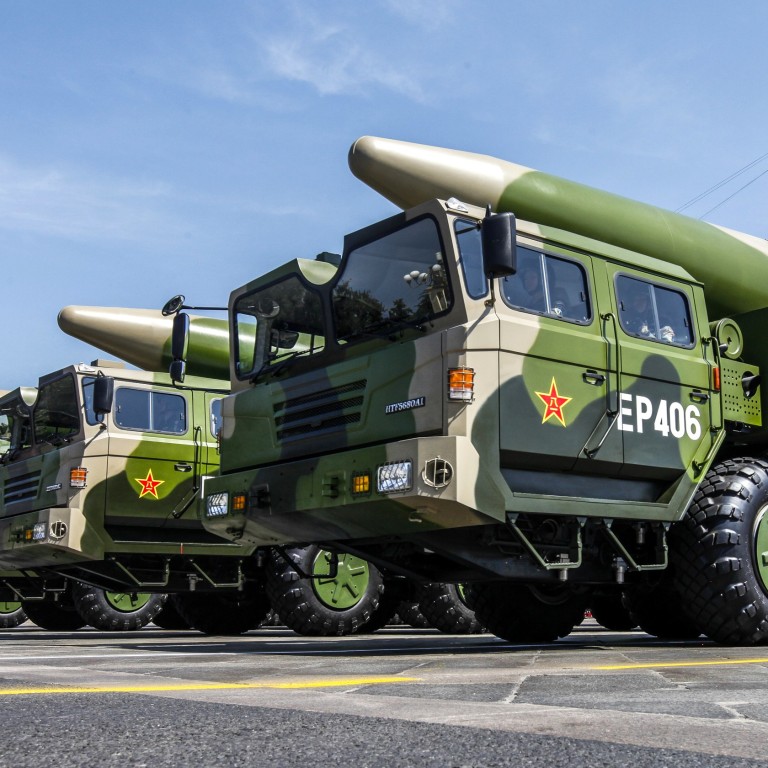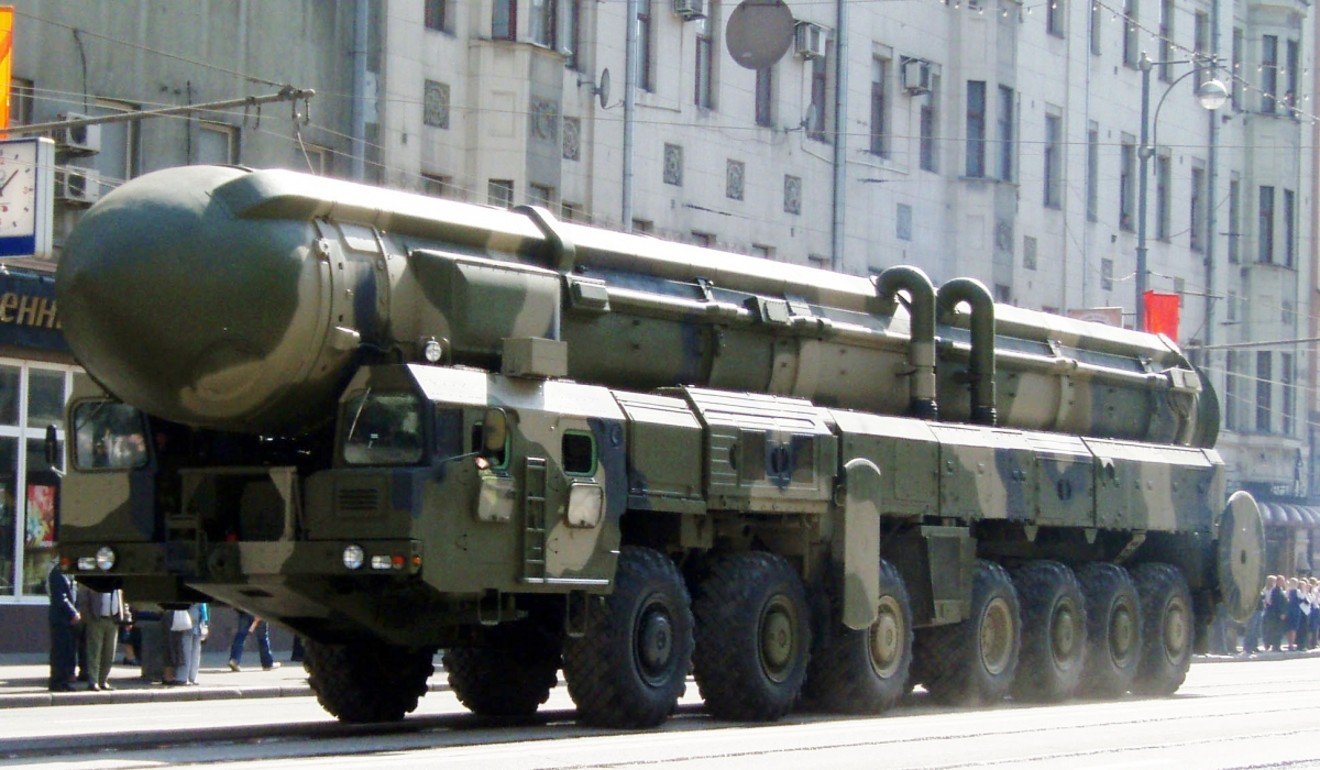
Next stop Guam? China shows off its next generation DF-41 and DF-26 ballistic missiles
- Beijing announces second-strike exercise involving an ICBM capable of hitting any point on the US or Russian mainland
- State broadcaster releases first ever footage of ‘Guam killer’ DF-26 intermediate-range missile in action
China’s ballistic missile technology is advancing rapidly and recent demonstrations of its capabilities leave little doubt that when it comes to military dominance in the Asia-Pacific region, Beijing is keen to send a message to Washington that the United States is not the only player in town.
Last month, the People’s Liberation Army Rocket Force (PLARF) showed off its firepower by running a simulated strike mission using a Dongfeng-41 (DF-41) intercontinental ballistic missile (ICBM) and revealing footage of the improved stability of Dongfeng-26 (DF-26) ballistic missile.
Chinese missile drill tests ‘ultimate symbol of PLA destructive potential’
DF-41: China’s ultimate nuclear deterrent
With its capability to deliver a nuclear warhead almost anywhere in the world, the DF-41 is China’s most advanced ICBM and has been the subject of intense speculation by Western analysts for the past decade.
At 16.5 metres (54 feet) it is slightly longer than its predecessor, the DF-31A, and with a range of up to 15,000km (9,320 miles) it not only flies further than either of its main rivals – the United States’ LGM-30 Minuteman (13,000km) and Russia’s RT-2PM2 Topol-M (11,000km) – but is capable of striking any part of the Russian or US mainland.
The fourth-generation missile has a top speed of Mach 25 (25 times the speed of sound) and as a “multiple independently targetable re-entry vehicle” can carry at least 10 warheads, each of which can be aimed at a different target.

The DF-41 can be fired from a silo-based platform or a road- or rail-based mobile launcher. The latter makes it more able to evade attack and in turn increases its value as a deterrent.
Song Zhongping, a missile expert and former officer with the PLA’s Second Artillery Force, said that the recent reports released by state media that Beijing had run a simulation of a second-strike against an “imaginary enemy” from an underground facility, showed the DF-41 was already in service.
A second-strike is a response to a nuclear attack with an equally powerful force.
While the location of the deployment is unknown it is widely thought to have been somewhere in northeast China, close to the Russian border.
DF-26: The ‘Guam killer’
The DF-26 is China’s next generation intermediate-range ballistic missile and takes its nickname from the fact its range – of 3,000km to 5,740km – puts the US island of Guam in the western Pacific and American military bases in Diego Garcia in the Indian Ocean within striking distance.
Operated by the PLARF, the solid-fuel missile system can be carried on a 12-wheeled Taian transporter erector launcher truck. This makes it difficult for US intelligence services to track and counter, either with their sea-based Aegis missile defences or, as on Guam, the long-range THAAD anti-missile interceptors.
Capable of carrying two types of nuclear warheads and many types of conventional ones – with a payload of 1,200kg (2,650lbs) to 1,800kg – the 14-metre-long missile can also be used for anti-ship strikes, such as US aircraft carriers and naval bases in the Asia-Pacific region.
China releases footage of ‘Guam killer’ DF-26 ballistic missile in ‘clear message to the US’
China’s defence ministry confirmed last year that the DF-26 had entered service, and amid growing military tensions with Taiwan and the US, state broadcaster CCTV last month released the first ever footage of a DF-26 launch.
At least one missile was used in an exercise in northwest China and the four finlike flight control surfaces seen around its nose appear to have been designed to improve its stability.
Military analysts said the fins would provide greater stability as the missile neared a moving target, such as an aircraft carrier.

